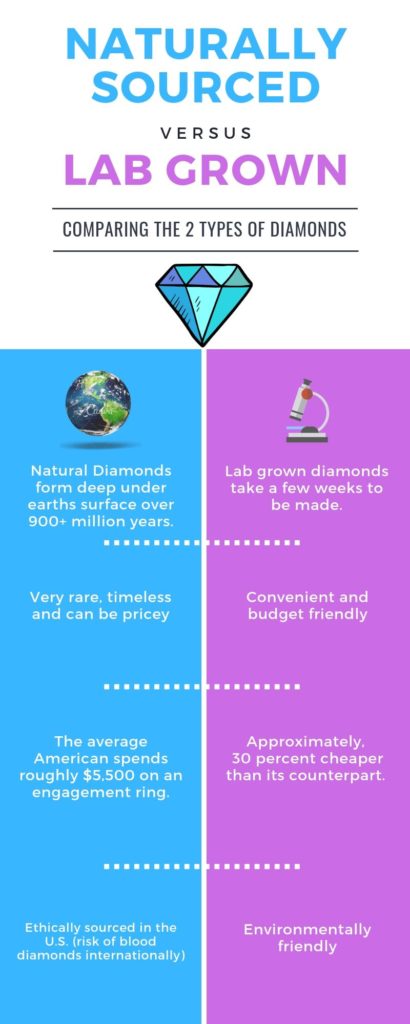Some Of Lab Grown Diamonds
Table of ContentsIndicators on Lab Grown Diamonds You Should KnowThe Of Lab Grown DiamondsWhat Does Lab Grown Diamonds Mean?Lab Grown Diamonds Fundamentals Explained
As you take a trip closer to the Planet's core, stress and temperature rise, which creates the best oven for carbon to be exchanged ruby (rubies are the only gems to be made from purely one element). With an enormous volcanic eruption, these diamonds were transported to the Earth's surface. It's approximated this process was rather fast (more than likely over the training course of several hours), which permitted the rubies to remain undamaged without melting.The brief answer: carats measure the mass of stones, karats determine the pureness of gold. Carat: 1 carat is equal to 0.2 grams, regarding the weight of a paperclip (following time you see a photo of Mariah Carey's 35 carat interaction ring, just imagine the worry of carrying 35 paper clips around your finger each day).
Right here are a few of the vital advantages of laboratory expanded diamonds and laboratory grown up ruby jewellery:.
The Facts About Lab Grown Diamonds Revealed
In other words, all-natural or earth-mined diamonds are crafted over millions of years below the Planet's crust from pure carbon combined with pressure and warm. Producing rubies in a laboratory needs the same process, simply fine-tuned to occur over a much smaller timespan in a far more controlled setup.
Whereas earth-mined diamonds are uncommon and limited and often tend to increase in cost gradually, laboratory rubies are conveniently offered. As need surges, laboratories can remain to create laboratory rubies meaning they are not minimal or limited compared to all-natural diamonds. If you have an interest in great jewelry from a financial investment viewpoint, like lab-grown ruby rings, they will not be an excellent fit for your needs.
They might believe that the cons of lab-grown rubies outweigh the pros. Some might argue that, for this factor, purchasing a lab-made ruby also comes with its honest factors to consider, as doing so takes income away from those involved in the all-natural diamond industry that might need it most.
Conventional diamonds check here depend on the Planet's conditions to determine their quality or lack thereof. In a laboratory, suppliers can directly manage a diamond's quality.
Things about Lab Grown Diamonds
You can conveniently discover tinted, manufactured diamonds on the (relatively) low-cost side as well as details cuts that would be pricier if you were shopping for a mined diamond only. That rarely suggests it isn't worth shielding.
all-natural rubies is that the last is extracted from natural down payments in the Earth while the previous is made in a laboratory making use of regulated settings. Their high quality is largely the same. While the distinction between lab-grown and all-natural diamond options are very little when it involves quality, a few of the disadvantages of lab-grown diamonds include the reality that the stone will certainly diminish over time and, to some, an absence of nostalgic worth that's usually connected with mined diamonds
The process includes minimal land disruption and eliminates issues related to logging and environment devastation. Lab-grown rubies are typically more inexpensive than natural rubies. This expense distinction can be associated to the streamlined production process and the avoidance of expenditures related to standard mining. The Controlled Environment in Which Laboratory Grown Diamonds Are Developed Enables Regular Quality.
Versatility in Design - Laboratory Grown Diamonds Deal Designers and Customers a Versatile Combination to Create Distinct and Innovative Fashion Jewelry Layouts - Lab Grown Diamonds. Laboratory Rubies Frequently Come with An Even More Transparent Supply Chain.
Lab Grown Diamonds Can Be Fun For Anyone
Market Assumption - In Spite Of Their The Same Physical Qualities, Laboratory Diamonds May Face Tests in Market Understanding. Some Consumers Still Perceive Natural Diamonds as Having Higher Worth and Status. The Production of Lab-Grown Diamonds Can Be Energy-Intensive, Especially in Approaches Like High Pressure Heat (hpht) and Chemical Vapor Deposition (cvd).
Natural Rubies Are Formed Over Countless Years Deep Within the Planet, Adding To Their Perceived Rarity. Lab-Grown Diamonds, In Spite Of Their The Same Residence, May Not Carry the Exact Same Rarity Element, Affecting Their Regarded Value for Some Consumers. Influence On Diamond-Dependent Economies - the Shift In The Direction Of Laboratory Grown Diamonds Might Have Economic Implications for Countries and Areas that Depend on The Diamond Mining Industry.

Ans. Laboratory Rubies Are of Equal High Quality to Natural Diamonds in Terms of Firmness, Radiance, and Quality. the High quality of A Ruby, Whether Lab-Grown or Mined, Is Figured Out by Its Cut, Shade, Clarity, and Carat Weight. Ans. Yes, Laboratory Diamonds Glimmer Similar To All-natural Diamonds. Their Radiance and Shimmer Are a Result of Their Cut and The Means Light Engages with Their Facets. Ans.